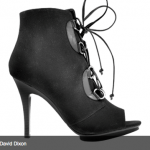Tags
Related Posts
Share This
David Dixon’s ‘true patriot’ design
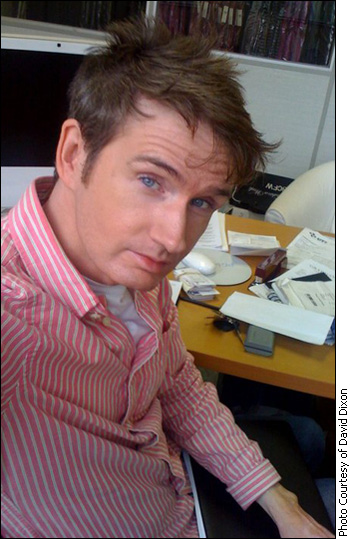
Genius at work? Dixon in his Toronto office.
David Dixon’s career as a fashion designer seems like a fairy tale in a business that is competitive, undersized and financially strained. Dixon has managed to rise above these conditions; in fact, Sun Media has described him as being a world ahead of Canadian fashion designers.
With 15 years’ experience, Dixon is currently leading the fashion industry here in Canada. He is one of two Canadian designers to have a partnership with Town Shoes, but is the only one to have two collections available exclusively at Town Shoes.
Dixon was hand-picked by Mattel to design their Barbie-inspired collection, and is constantly involved in prestigious fashion events such as “Behind the Scenes with Canada’s Top Fashion Designers,” hosted by the nonprofit support group Toronto Fashion Incubator (TFI).
Dixon’s work is regularly featured in the pages of top Canadian fashion media Flare, Fashion and Elle Canada. He has shown at LG Fashion Week in Toronto and Ottawa Fashion Week, and had his first showing at Montreal Fashion Week this past fall.
His clothing is sold internationally, in the United States, Kuwait, United Arab Emirates, Switzerland, Germany, Hong Kong and Tokyo. His celebrity fans include Jann Arden, Pamela Anderson, Meg Ryan and Jennifer Love Hewitt.
Dixon’s success comes from tapping into the demand for affordable, accessible luxury.
Dixon passed a major milestone with his 2000 collection, which he showed at The Docks in Toronto. He received a standing ovation and a cover page on the National Post saying he’d arrived.
The key to Dixon’s success is his raw talent, says Rania Abdulla, a stylist working on her first collection and a professor in Algonquin College’s fashion department, “He has been around for some time, and his design is international. It can suit any climate and all tastes, which in the end is what makes designers successful.”
Like most fashion designers, Dixon began by producing high-end, exclusive pieces: The David Dixon collection begins at $600 and is well received, but the high price point keeps it out of the hands of many. However, Dixon has found greater success in creating collections that are affordable and widely available.
His second collection came when he was chosen by Mattel to create an affordable line of women’s clothing inspired by the doll Barbie, for her 50th birthday, in 2009. The line reached phenomenal success, but was available only through The Bay.
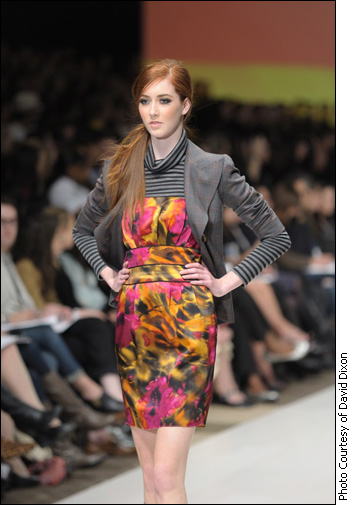
Lots of colour, florals and stripes typify Dixon’s Barbie collection. A perfect mix of professional and girly.
Now, Dixon has launched his third collection, Studio by David Dixon, which he describes as a “similar flavour, but totally different colour palette, look and feel.” The Studio collection ranges from $150 to $395 and is available at many boutiques, as well as at The Bay. Dixon’s success comes from tapping into the demand for affordable, accessible luxury.
After being a regular at LG Fashion Week for years, Dixon unveiled his Studio collection in Montreal in 2010; it was his first time participating in the city’s fashion week. Studio is a playful and elegant collection. It conjures up images of women sipping tea in a garden or martinis on a yacht. There is a lot of red, blue, florals, stripes and simple cuts.
A few weeks after MFW, on November 9, 2010, TFI featured its first annual fundraiser, “Behind the Scenes with Canada’s Top Fashion Designers.” Hosted by David’s brother, Glenn Dixon (interior designer and TV personality on the W Network’s Take This House and Sell It), the event had guests flying in from New York, Vancouver and London. It brought David together with top Canadian designers Lucian Matis and Joeffer Caoc to present their Spring 2011 collections in an intimate setting where they revealed their challenges and inspirations and took the audience behind the scenes, from the concept to the catwalk.
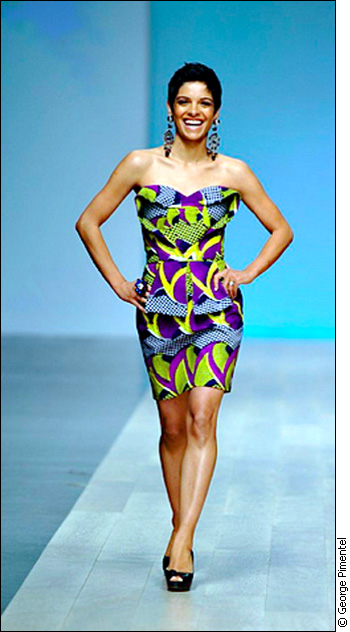
At Toronto’s 2010 fashion week, CBC TV news anchor Anne Marie Mediwake modeled a Dixon dress cut from African fabric. It was then auctioned off to raise money for African grassroots groups.
Flare’s editor-in-chief, Lisa Tant, skipped the Scotiabank Giller Prize ceremony to attend. She tweeted from the show, “I remember David Dixon and Joeffer Caoc’s 1st New Labels show (about 15 years ago). I thought they were better than the major designers then.”
Before Dixon was designing clothing for real women inspired by Barbie, he was designing clothing for his Barbie dolls as a toddler. David and brother Glenn grew up in Toronto’s High Park neighbourhood, the youngest of six children. Glenn recalls having fashion-design competitions with David throughout their youth. “I gave up eventually; his sketches were just too good, I couldn’t win.”
It was on May 2, 1981, when an episode of The Love Boat guest-starred fashion designers Gloria Vanderbilt and Bob Mackie, playing themselves, that David realized his calling. “That’s when I first saw I could make a career out of what I was doing for fun. It looked so glamorous; I thought, this is the job for me. Literally the next day, I began sketching.”
Dixon dreamed of studying at Parsons School of Design in New York City, but his Toronto-native parents refused to let 17-year-old Dixon move to the Big Apple. He instead graduated from Ryerson’s school of fashion, and apprenticed under Alfred Sung.
Just one year after he set up his first studio at TFI in 1995, Dixon was named City of Toronto New Designer of the Year and Yorkdale New Designer of the Year. He now serves as the volunteer President on the TFI Board of Directors, as well as offers his mentorship services to young talent.
Canada’s quality fashion market
Canadian fashion, like many industries, suffers from brain drain. Alexandra Gunn, fashion editor at Ottawa Life magazine, says “I know a lot of designers make the move to the U.S., which is kind of sad because we would have a bigger fashion scene if most stayed. But business is bigger down south, and there are more opportunities to succeed.”
Dixon admits that Canada has one-tenth the market of the U.S.; however, he says, what we lack in size, we make up for in quality. In Canada, the name on the label means little compared to the feel of the fabric and the quality of the stitch. Canadian fashion is based on quality products, not licensed brand names. Canada has designers who sell their products at all the same stores as Dolce & Gabbana, but the same recognition isn’t there, says Dixon.
Dixon explains that brands such as Dolce & Gabbana make most of their money from licensed products such as sunglasses or perfumes. “It’s an accessible luxury: Whereas someone can’t afford a $4,000 coat, they can afford an $80 bottle of perfume.” Dixon knows that if his clothing sells or receives media attention, it is because of his talent, not because of a mass-marketed brand name.
To make it in the fashion industry, diversity is a necessity. Dixon says the challenge every day is to create pieces that a conservative politician in Ottawa would wear, but that are versatile enough for a small-town wife from the Maritimes to also feel comfortable in.
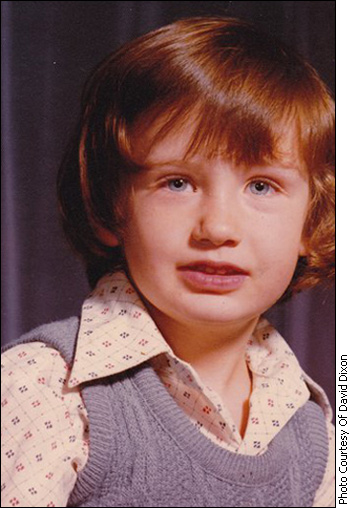
The future enfant terrible at age four. Today, Dixon notes his “love for mixing textures and patterns at such a young age!”
“No other designer is breaking into Canadian culture like he is,” says Gunn. “He was able to build a very strong, loyal following staying in one spot. I think staying in Canada may be a risk for some designers, but for Dixon I think it was the right move. He wouldn’t have got his Town Shoes deal if he didn’t stay, and having your own line is a huge achievement—but having a shoe line with Town Shoes? That is huge!”
Dixon remains a dedicated family man. He would never consider relocating, because his family is his support system. He and his partner of almost 17 years, Jeff (a teacher at the Etobicoke School of the Arts), have two adopted boys, Josh, 9, and Liam, 12. The family resides in Mississauga but has a cottage on Lake Waseosa in Muskoka, where Dixon likes to relax and catch up on his tabloids.
Dixon says family is “the most important thing to me; it’s the rock to stand on. It’s the key to success for any individual. No one is self-made.”







